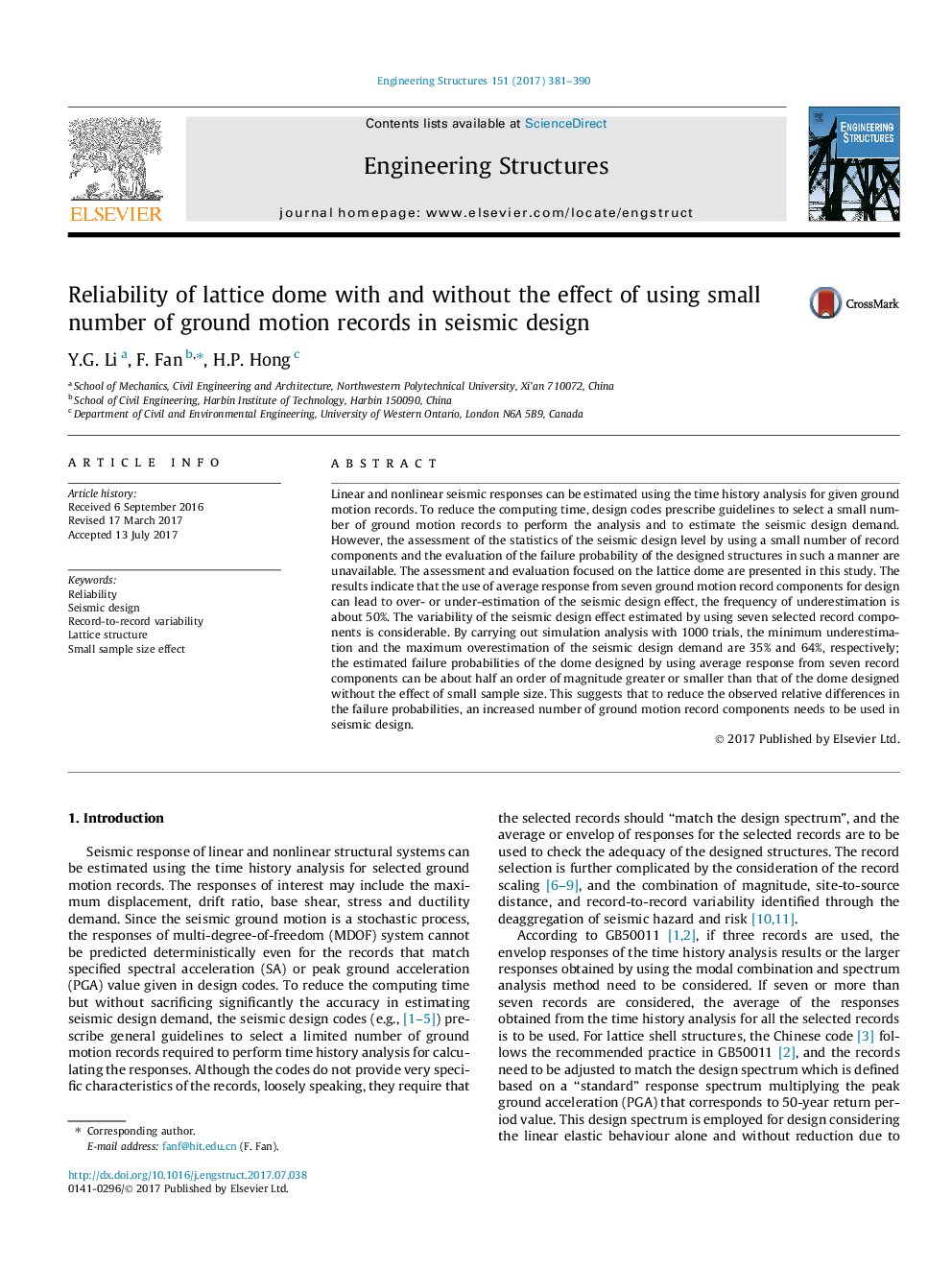| Article ID | Journal | Published Year | Pages | File Type |
|---|---|---|---|---|
| 4919775 | Engineering Structures | 2017 | 10 Pages |
Abstract
Linear and nonlinear seismic responses can be estimated using the time history analysis for given ground motion records. To reduce the computing time, design codes prescribe guidelines to select a small number of ground motion records to perform the analysis and to estimate the seismic design demand. However, the assessment of the statistics of the seismic design level by using a small number of record components and the evaluation of the failure probability of the designed structures in such a manner are unavailable. The assessment and evaluation focused on the lattice dome are presented in this study. The results indicate that the use of average response from seven ground motion record components for design can lead to over- or under-estimation of the seismic design effect, the frequency of underestimation is about 50%. The variability of the seismic design effect estimated by using seven selected record components is considerable. By carrying out simulation analysis with 1000 trials, the minimum underestimation and the maximum overestimation of the seismic design demand are 35% and 64%, respectively; the estimated failure probabilities of the dome designed by using average response from seven record components can be about half an order of magnitude greater or smaller than that of the dome designed without the effect of small sample size. This suggests that to reduce the observed relative differences in the failure probabilities, an increased number of ground motion record components needs to be used in seismic design.
Related Topics
Physical Sciences and Engineering
Earth and Planetary Sciences
Geotechnical Engineering and Engineering Geology
Authors
Y.G. Li, F. Fan, H.P. Hong,
